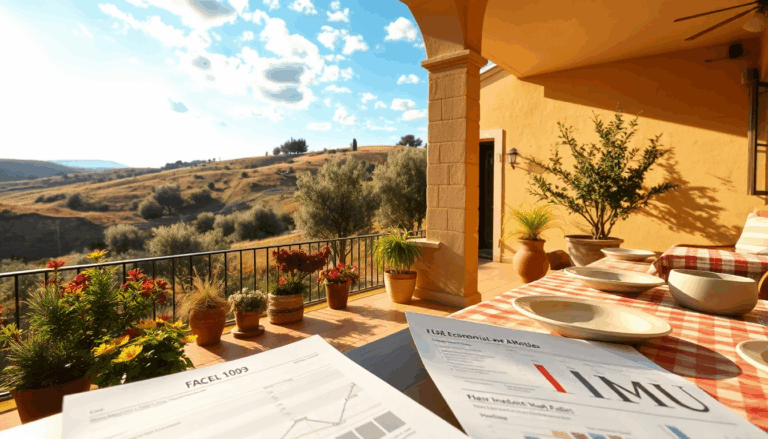Owning a second home that you rent out part of the year can seem like a dream investment. But hold on—before you dive in, it’s crucial to grasp the fiscal responsibilities that come with it, especially when it comes to the IMU, or Municipal Property Tax. Navigating the complex
landscape of Italian regulations and local exceptions can feel overwhelming. Are you ready to break down these intricacies and make sense of it all?
Understanding Second Homes and IMU Obligations
So, what exactly qualifies as a “second home”? Simply put, it refers to any property that isn’t your primary residence. Unlike your main home, which might enjoy some tax perks, second homes are always subject to IMU, no matter how you
use them. It might surprise you to learn that whether your property is rented out or left empty, you still have to pay this tax. And with the recent abolition of the TASI, the responsibility now solely falls on you, the property owner.
Thinking about renting your property for a few months? That doesn’t automatically mean you’ll see a cut in your IMU. However, there are specific scenarios where local
regulations might provide some relief—like if your property is deemed uninhabitable or is undergoing renovations. Generally speaking, IMU is due for the entire year and is calculated based on how many months you own the property and your share of ownership. Have you thought about how these rules could influence your investment strategy?
Calculating the IMU: A Practical Guide
Now, let’s get into the nitty-gritty of IMU calculation. The taxable base starts with your property’s cadastral income, which needs a 5% bump. This figure is then multiplied by a cadastral coefficient—usually set at 160 for residential properties in category A (excluding A/10). The rate itself varies depending on your municipality, with national averages around 0.86%. Keep in mind that some municipalities might go over the 1% mark. Have you looked up the applicable rate for your area?
It’s important to remember that the duration of your rental agreement doesn’t impact how IMU is calculated. The tax is based on actual possession of the property. For example, if you own the property for the full year, your IMU will be calculated on all 12 months, regardless of whether it was rented or vacant. If you own just a portion, say 50%, your IMU will be proportionate to your ownership stake and the months you actually possessed the property. Are you sure that you fully understand your situation?
Avoiding Common Pitfalls in IMU Calculations
A common pitfall for second home owners is mixing up the rental period with ownership duration. Many mistakenly think that renting out the property for six months slashes their IMU liability in half. This misconception can lead to penalties and unwelcome requests for extra payments from tax authorities. Did you know that the Revenue Agency and local municipalities cross-check this information?
If you find yourself uncertain about your fiscal obligations, it’s wise to consult a qualified accountant or a tax assistance center (CAF). They can offer detailed guidance and help you navigate your tax responsibilities. Remember, each municipality may have specific rules and even online calculators to assist with IMU calculations. In short, as an owner of a second home that you rent out for only part of the year, you are responsible for paying IMU for the entire year based on your ownership share. Reductions tied solely to rental or vacancy periods are rare unless specific local exemptions apply. Staying informed about this legislation is key to avoiding headaches down the road.

